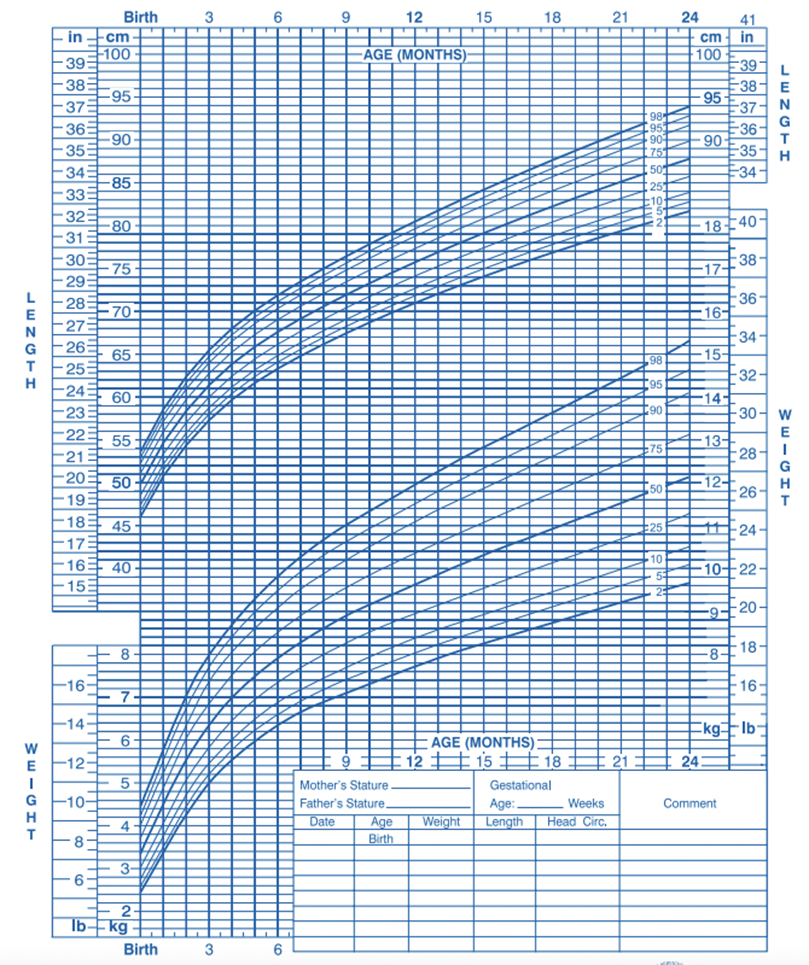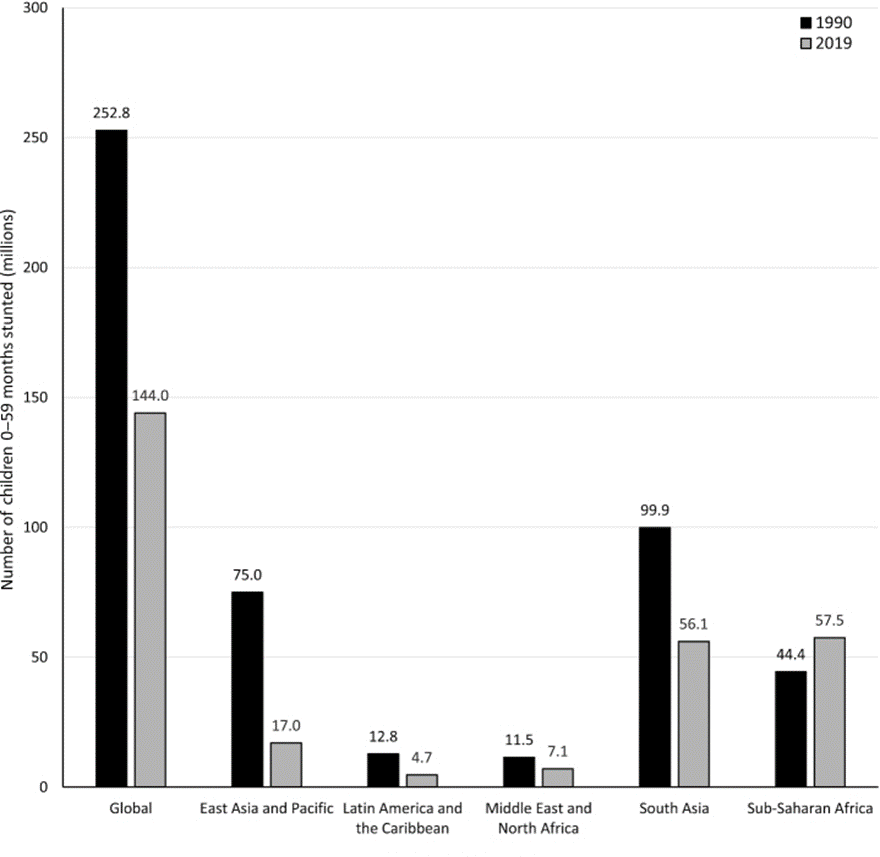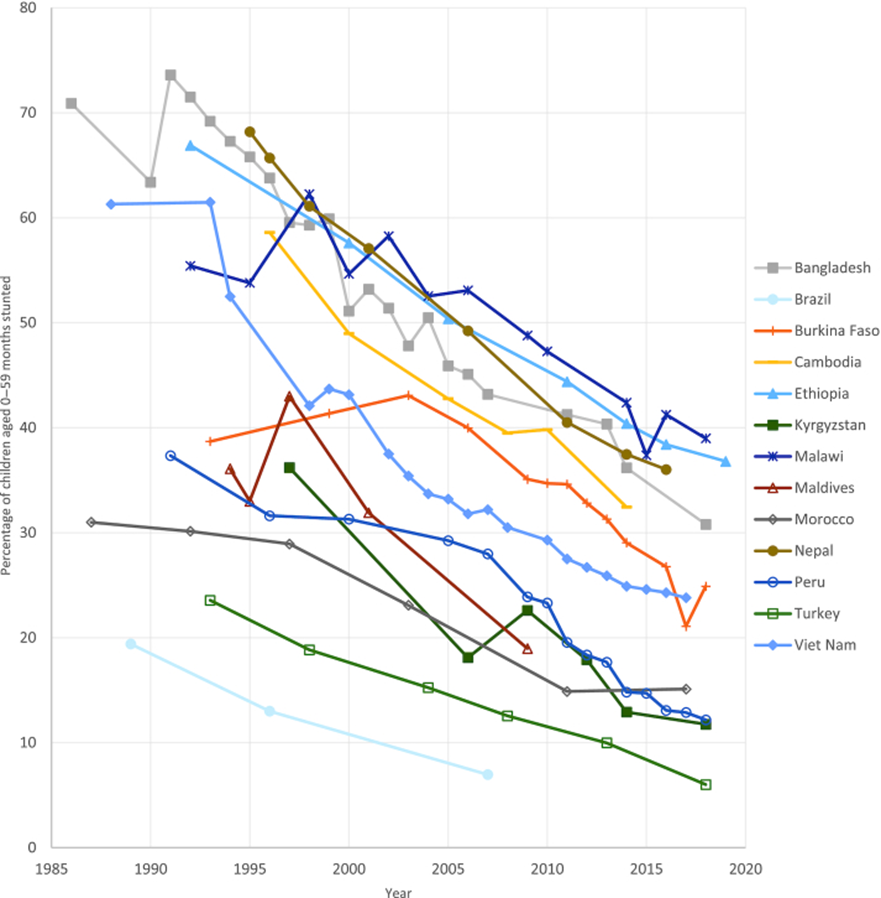2.3: Growth in Body Length/Height
- Page ID
- 139028
Growth in Body, Length, and Height
The average length of a newborn is 19.5 inches, increasing to 29.5 inches by 12 months and 34.4 inches by 2 years old (WHO Multicentre Growth Reference Study Group, 2006). The average length at 12 months (one-year-old) typically ranges from 28.5 to 30.5 inches. The average length at 24 months (two years old) is around 33.2 to 35.4 inches (CDC, 2010). Figure \(\PageIndex{1}\) shows this rapid growth in length/height for males from birth through 24 months of age.

Stunted Growth
Infant and toddler length/height can vary, but a length/height too low can be a worrisome sign of stunted growth. Stunted growth is characterized by a height of more than two standard deviations below the World Health Organization (WHO) age-specific growth reference standard (WHO Multicentre Growth Reference Study Group, 2007). In simpler terms, stunted growth is when children are significantly shorter in length/height than what would be expected for their age. Children with stunted growth have a mortality rate that is three times higher than their peers (McDonald et al., 2013; Victora et al., 2021) and are at a higher risk of displaying cognitive challenges later in life (Prendergast & Humphrey, 2014; Sanou et al., 2018; Walker et al., 2021).
In the U.S. the prevalence of stunting is estimated to be about 3.2% (World Health Organization, 2021). While the global prevalence has declined over the years, childhood stunting continues to be a great concern worldwide. Figure \(\PageIndex{2}\) shows the global and regional change in the number of children showing stunted growth from 1990 to 2019. In 1990, 252.8 million children under five years of age exhibited stunted growth; by 2019, this number dropped to 144 million children. The prevalence of stunting differs greatly by country. Figure \(\PageIndex{3}\) shows the longitudinal trajectory of the prevalence of stunting in thirteen countries from 1985 to 2019. While all thirteen countries show a decline, there are still significant differences between countries. Even after 2015, Malawi, Ethiopia, Nepal and Bangladesh each had a prevalence between 30% to 40%, while Morocco, Peru and Kyrgyzstan each had a prevalence between 10% to 20%.


[1] Image from CDC is in the public domain.
[2] Image from Vaivada et al., 2020). Stunting in childhood: An overview of global burden, trends, determinants, and drivers of decline. The American Journal of Clinical Nutrition, 112, 777S-791S. CC by 4.0
[3] Image from Vaivada et al., (2020). Stunting in childhood: An overview of global burden, trends, determinants, and drivers of decline. The American Journal of Clinical Nutrition, 112, 777S-791S. CC by 4.0

